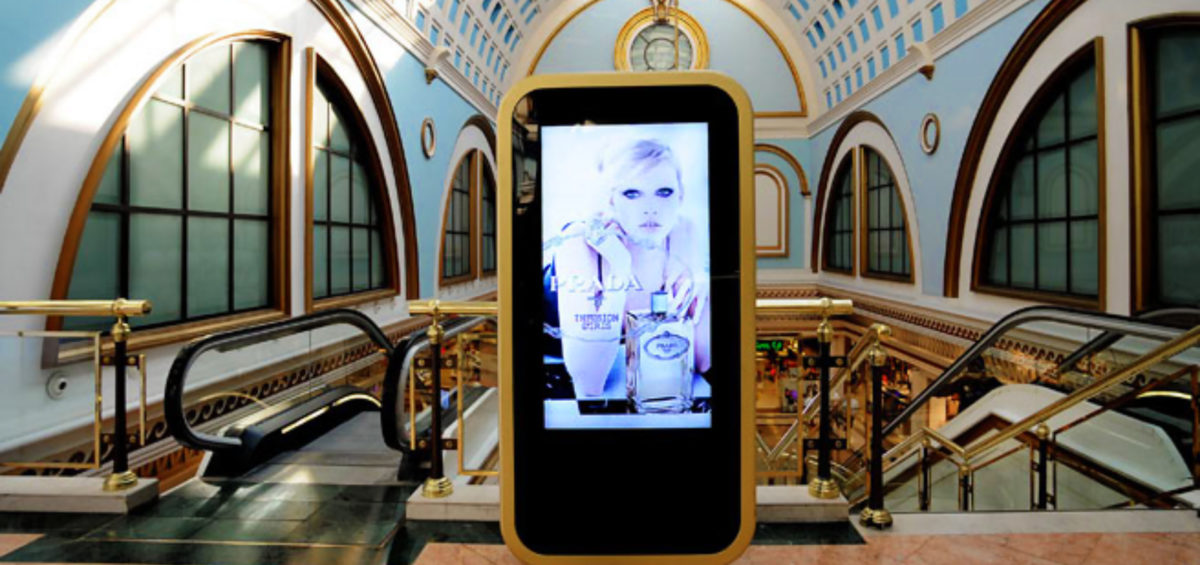To an outsider the internet could be seen as the ultimate enemy of the traditional shopping mall. The World Wide Web allows consumers to shop from the comfort of their own home, to scout the entire world for the best possible deal, and offers a range of products that no mall – no matter how big – could hope to hold. How on earth could a brick and mortar shopping mall ever compete with that?
Necessity is the mother of invention, as the old saying goes. After the recession of 2008 resulted in an online shopping boom, with consumers scouring the web in search of the best possible deal, shopping malls realised that they needed to change their tactics. And change they have.
In 2015 the British Council of Shopping Centres (BCSC) published its Retail’s Digital Future report, outlining what was being done, and what needs to be done, in order for shopping malls and High Streets to remain profitable, and perhaps more importantly, relevant.
So what did the study find? And in what other ways are shopping malls adapting to this ever-more-digital world? Let’s take a look.
Making the Most of a Mall’s Advantages
The first thing to note is that despite the obvious disadvantages that physical shopping malls have against their online counterparts, they also have plenty of inherent advantages.
The first – and perhaps greatest – advantage that a physical mall has is that it is exactly that; it’s physical, it’s real. The products inside it are physical and real. Being able to see, touch, smell and hear something in real life is a unique experience; one that simply can’t be replicated online.
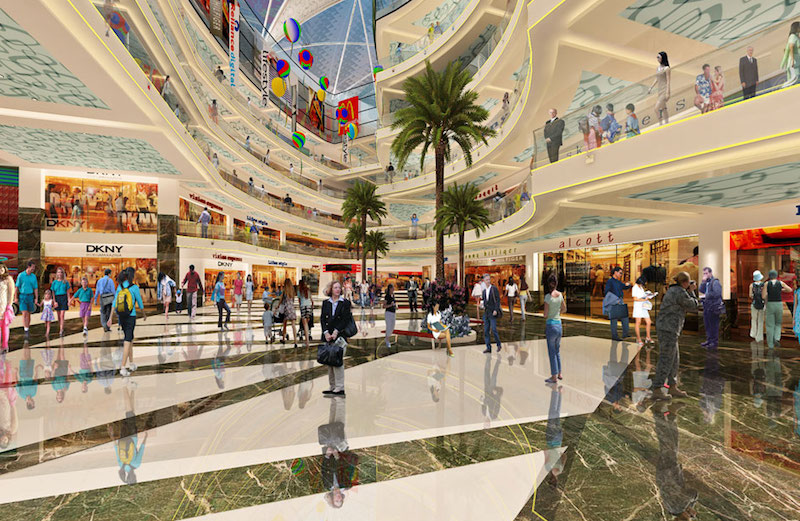
This is particularly prevalent when it comes to fashion. While shopping online for clothes is certainly popular, being unable to try them on can result in a litany of returns, which quickly erases one of online shopping’s biggest advantages – convenience. The same goes for many things that benefit from testing, such as fragrances, fresh food and body care products.
Major buys are also often left as an in-person purchase. A purchase that’s upwards of $1000, be it a new TV, an engagement ring or a piece of furniture, is seen as an important enough investment to attend to it in person.
How does this all affect the malls of today? They’re moving away from renting space to retailers that may not be as predisposed to the perks of in-person shopping (think DVD/gaming stores and travel agencies), and granting more space to those stores that have the in-person edge. The huge percentage of fashion retailers in most modern-day malls is testament to that fact.
Secondly, as discussed here by Mckinsey & Company, increased urbanisation is resulting in many people viewing the traditional mall as not just a retail space, but as a meeting place and entertainment destination. In regions where public spaces are either limited or even dangerous, malls offer a place where people can safely meet, as well as be fed and entertained.
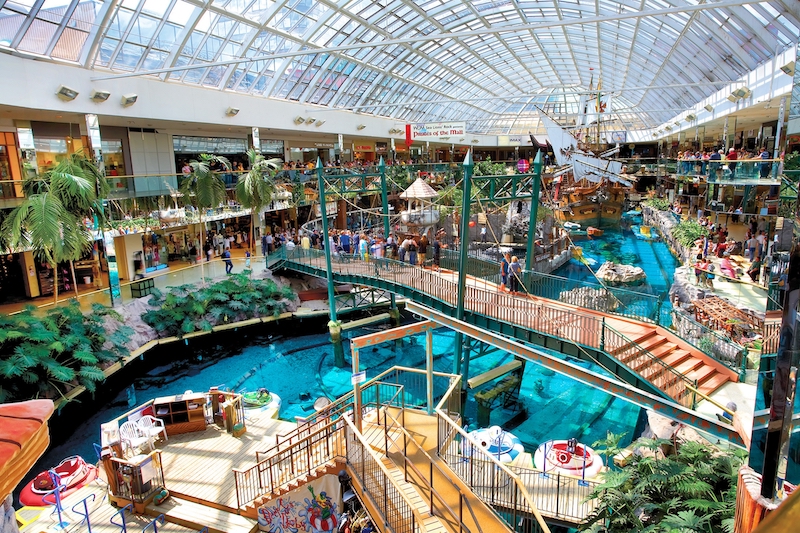
This is seeing malls the world over devoting more space to food courts, cinemas, bowling alleys and watering holes. The aim is to move the standard consumer’s perception of a mall from ‘a place to buy things’ to ‘a place to have a day out’.
So sure, malls may not have the range, the bargains or the convenience offered up by the world of online shopping, but they have got plenty of things going for them as well.
Offline or Online: Why Not Both?
Where many see the digital age as the death knell for malls, others see opportunity. Rather than cursing the encroachment of digital technology on their space, they’re embracing it. They’re melding the benefits of offline and online experiences in a way that is enhancing the mall shopper’s experience.
The main way that they are digitising the mall shopper’s experience is by extending it to outside of the visit. Social media is an omnipresent feature in most people’s lives, and smart malls are using this fact to remain relevant. By engaging with customers while they’re not visiting, malls can stay front of mind. Interesting content is key to this strategy, as posting a mall’s opening hours or a map of retail locations doesn’t exactly encourage liking, commenting and sharing.
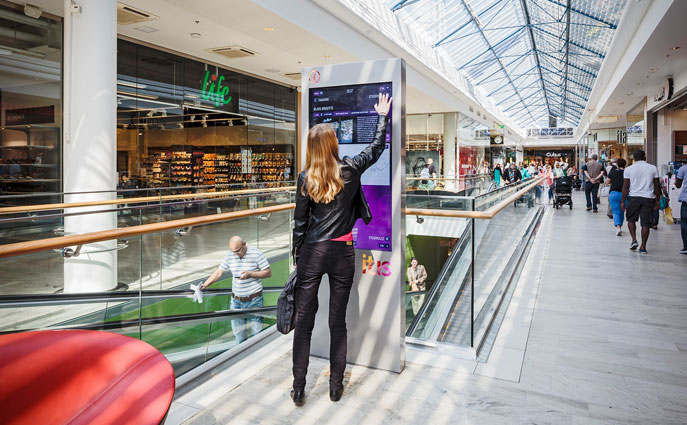
Inspiration can be taken from Dos Lagos shopping centre in California, who are always conducting polls with their social followers as to what store they’d like to see at the centre, or what movie they’d like to see screened at the mall’s cinema. Midtown Village in Alabama uses User Generated Content (UGC) magnificently, with one recent campaign asking shoppers to post selfies from in front of their favourite Midtown retailer in order to win a $500 voucher for the store.
Technologies like SocialWall can even make social media a physical feature of a mall. Shoppers can interact with a mall’s social media accounts using a predetermined hashtag, the posts then being displayed on a big screen in the mall. This further drives engagement and interest in the mall’s social accounts, making them more ‘real’.
The Tech Making Malls Relevant Again
Over and above social media, the possibilities offered up by digital technology are incredible. Smartphone apps that offer an interactive map of the mall, leading you to your favourite stores; smart car parks that allow customers to check where free space is online; hyper-targeted promotional offers that take into account each shopper’s personal preferences; the list is limited only by your imagination.
Tamoco is one tech start-up hell bent on bringing the humble mall into the 21st century. Pioneers in mobile proximity technology, they recently teamed up with Uber to produce smart beer mats that offer a pub patron a discounted ride by simply tapping their phone. Taking this tech further, Tamoco envisages sending special offers to people in real-time as they walk past a mall retailer, produced by analysing the person’s social media activity and greater online profile.
Using tech to rekindle shoppers’ love for physical stores is high on the agenda. Augmented reality mirrors which analyse the fit of an outfit and give the shopper multiple viewing angles are already a thing, while custom 3D printed goods that are made in front of a customer are just around the corner.
Many other tech start-ups see malls as the future, rather than a relic, using them as the test-bed for new and exciting ideas. Gamar aim to position themselves as the arcade of the future, offering augmented reality tours, learning material and games to weary shoppers. Vinaya, on the other hand, are using malls to spread word about their customisable smart jewellery; products that are best appreciated in person.
Retailtainment
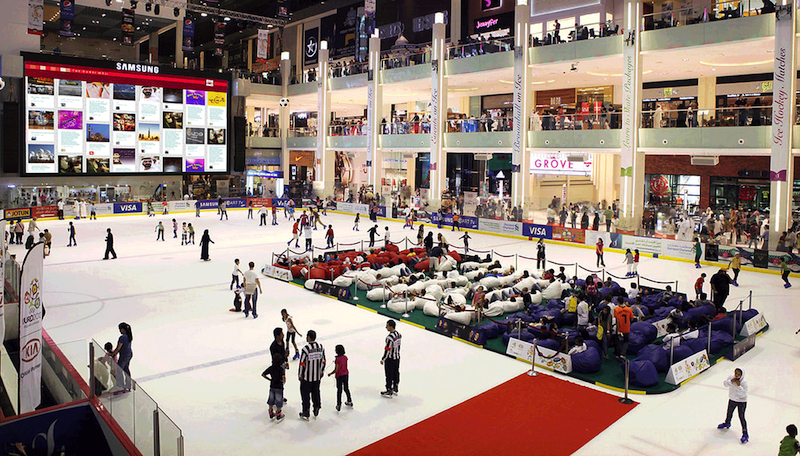
These start-ups are lighting the path somewhat for the malls themselves, who are now using new tech to firm their status as an entertainment destination rather than a pure retail space. The term ‘retailtainment’, coined in George Ritzer’s 1999 book Enchanting a Disenchanted World: Revolutionizing the Means of Consumption, describes the use of ‘ambience, emotion, sound and activity to get customers interested in the merchandise and in a mood to buy’.
While retailtainment has always been bubbling in the background – think of the humble mall santa – it has, of late, become much more of an art form.
One of the most notable recent efforts is that of interactive Virtual Reality displays, which have spawned a litany of ‘fail’ videos of people not quite ready for such an immersive experience. But less spectacular forms of retailtainment can prove just as effective; domotics (home automation) displays, seasonal pop-up stores and feature film tie-ins are all pushing the retailtainment envelope to the point that it is becoming a vital part of any mall’s marketing strategy.
A Bright Future for Those Willing to Adapt
In short, if shopping malls are open to the possibilities that the digital world presents, then their future looks bright. Malls need to recognise their strengths and use digital technologies to heighten those unique value propositions.
Until a digital world is developed in which all the senses – touch, sight, hearing, smell and taste – are catered to, there’ll always be a market for shopping malls. But how big that market is will rely on how open the humble shopping mall is trying new ways of doing things.




